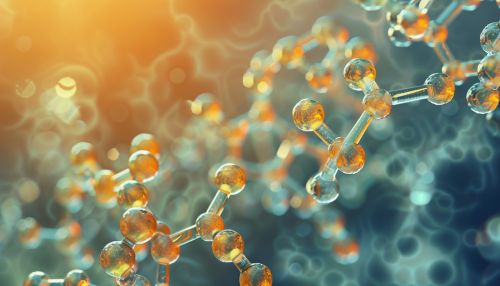Lipase
Introduction
Lipase is a type of enzyme that plays a crucial role in the digestion and absorption of dietary fats in the human body. These enzymes are primarily produced in the pancreas and the small intestine, but can also be found in certain other tissues and bodily fluids. Lipases function by breaking down lipids (fats) into fatty acids and glycerol, which can then be absorbed by the body for energy use.


Structure and Function
Lipases are proteins, and like all proteins, they are made up of amino acids. The structure of a lipase enzyme is complex and includes a 'lid' that can open and close over the active site where the lipid molecule binds. This unique structure allows lipases to be highly specific in their action, only breaking down certain types of lipids.
The primary function of lipases is to hydrolyze dietary fats into their component parts, fatty acids, and glycerol. This process is essential for the digestion and absorption of fats, as the human body cannot directly absorb whole fat molecules. Instead, these molecules must be broken down into smaller, more manageable pieces that can be absorbed through the walls of the small intestine and into the bloodstream.
Types of Lipases
There are several different types of lipases, each with its unique function and location within the body. These include:
- Pancreatic lipase: This is the primary lipase involved in the digestion of dietary fats. It is produced in the pancreas and secreted into the small intestine during digestion.
- Hepatic lipase: This lipase is produced in the liver and plays a role in the metabolism of lipoproteins, which are complexes of fats and proteins that transport lipids in the blood.
- Lipoprotein lipase: This enzyme is found on the walls of blood vessels in muscle and fat tissue, where it breaks down triglycerides in lipoproteins into free fatty acids and glycerol for energy use.
- Endothelial lipase: This lipase is produced by endothelial cells, which line the inside of blood vessels. It plays a role in the metabolism of high-density lipoprotein (HDL), often referred to as 'good cholesterol'.
Role in Digestion
During the process of digestion, lipases play a crucial role in breaking down dietary fats into smaller molecules that can be absorbed by the body. When fat is consumed, it first encounters lipases in the stomach, where some initial breakdown occurs. However, the majority of fat digestion takes place in the small intestine, where pancreatic lipase acts on the fat molecules.
In the small intestine, lipases break down triglycerides into monoglycerides and free fatty acids. These smaller molecules can then be absorbed through the intestinal wall and into the bloodstream, where they can be transported to cells throughout the body for energy use.
Lipase Deficiency and Disease
A deficiency in lipase can lead to a variety of health problems, primarily related to the digestion and absorption of fats. Without sufficient lipase, the body cannot properly break down and absorb dietary fats, leading to malnutrition and weight loss. This condition is often seen in individuals with diseases of the pancreas, such as pancreatitis or cystic fibrosis, which can impair the production of pancreatic lipase.
In addition to malabsorption, lipase deficiency can also lead to the accumulation of fat in the stool, a condition known as steatorrhea. This can result in loose, greasy stools that are difficult to flush away.
On the other hand, elevated levels of certain lipases in the blood can be indicative of pancreatitis or other pancreatic diseases. Therefore, measuring lipase levels can be a useful diagnostic tool in certain situations.
Conclusion
Lipases are essential enzymes that play a crucial role in the digestion and absorption of dietary fats. They are produced in various parts of the body, including the pancreas, liver, and small intestine, and each type of lipase has a unique function and role within the body. Understanding the function of lipases and their role in health and disease is an important aspect of biochemistry and medicine.
